The increasing amounts of daylight and rising temperatures have already begun to initiate springs rebirth at the Jersey Shore. Every angler is eagerly anticipating taking that first cast and hooking into a burly linesider or spring weakie that will once again put a hefty bend in our rod. But this year you plan to do it a little differently than last year. This year when you hit the beach you plan to be armed with the long rod.
Each year our guide service is helping more and more anglers to make the switch from the heavy hardware to this fascinating sport of saltwater fly fishing. With the exposure that the sport has received through Saturday morning ESPN Outdoors, national magazine publications, and various internet sources it is no wonder that the curiosity level of many anglers is at an all-time high.
Years ago if someone had the long rod in their hand it seemed liked an oddity, but today it has almost become a prerequisite if you consider yourself to be a well-rounded surfster. The sport has not limited itself either to the jetty jock or back bay wader but has also become a part of the arsenal of many inshore and offshore boaters. Even the likes of tuna, dolphin, and marlin are not crossed off the list when it comes to doing it on the fly.
So why fly you may ask yourself? Why make another investment into something that looks like it is a lot of work and extremely difficult? You can ask any number of fly fishers and get numerous answers to this question but for me the answer lies in the strike and the ensuing fight. The sensation of holding a pumping fly rod in your hand is unmatched by any means of conventional or spinning tackle. Because of its design a pretzeled long rod will release all of its energy directly into your hand. I can best describe the feeling as if you had your captured fish by the tail. This is the ‘ flyrodders fix’ that keeps me doing it time and time again with the long rod.
So what will you need to get started this season in the salt? Let’s look at some of the essential equipment that as a guide I recommend. And let’s look at it from the perspective that as a beginner you will not have to break the bank.
Definition of Saltwater Fishing
At its core, saltwater fishing is exactly what it sounds like: fishing in saltwater conditions. This often refers to the oceans of the world, but also places where freshwater rivers meet with the sea. From time to time this is also known as marine fishing, depending upon who you talk to.
Those who love saltwater fishing are able to do it almost anywhere on Earth, with the main exceptions generally being near either of the poles where it can be dangerous to navigate a boat. While the commercial fishing industry is a large part of what goes on out at sea, the scope of this article will stick with recreational fishing.
What in the past was known as the saltwater fisherman is today known as the saltwater angler, an improved term that more accurately describes the fact that fishing is not just for men. Children, too, love the thrill of saltwater fishing: especially since some of what you could catch can grow much bigger than even the parents!
The marine environments of the world present ample opportunity to catch a vast number of different fish species, ranging from bluefish to halibut, marlins to sharks, and beyond. Most of these fish are eaten on a regular basis, or released back to the depths, but anglers are also motivated by the chance of bagging a trophy fish to have mounted on the wall, if so inclined.
The saltwater fishing industry that surrounds this particular sport is growing year by year with a huge number of charter boat companies springing up around the world. These fishing guides can be an excellent way for family and friends to spend some time together doing something fun.
Saltwater Fishing Equipment
Rod
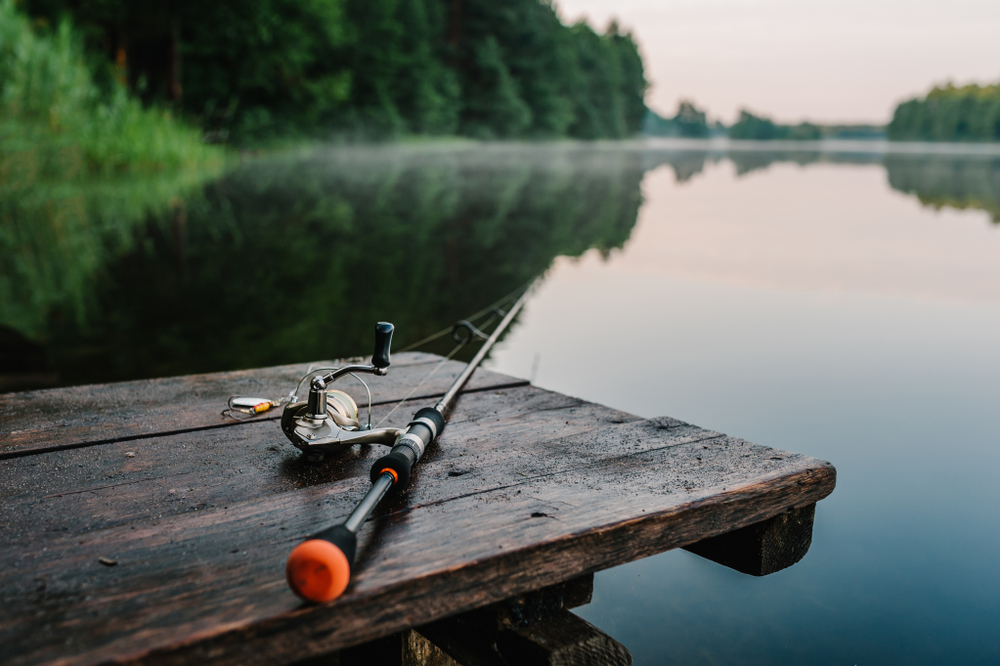
Your first order of busy is to know which of the three major pieces of equipment, rod, reel, or line is most important and deserves the most consideration. First and foremost you should invest the most money into the rod that you are buying rather than the reel. The rod is the key element that will dictate your casting performance when it comes to shooting a line into the suds. This is where you will want to spend the most money. The line that you select will factor next into the equation when speaking of casting performance and then finally the reel.
OK so what weight rod will you want to purchase? The key to making your decision should be based on which rod will be the most versatile, provide the most uses, handle many different situations, and have you best prepared for tangling with some quality sized bass, blues, weakfish, and false albacore.
How to choose a rod
The rod that you will want to buy is a ten-weight. I favor purchasing a ten weight over a nine weight for the following reasons. First consider the size of the fish that you will be targeting and hooking into from the surf. If you fish throughout the season you will find some rather large chopper blues or burly bass that you will not doubt have an encounter with. You will need a rod that will be able to generate enough power and leverage to subdue the fish without playing it to exhaustion. This is particularly true today as many anglers practice catch and release. Or if you are planning on bringing your catch home for dinner remember the longer you play the fish on a lighter rod the greater the chance there is that it will break off or the hook will become dislodged.
Secondly, if you are a boater or you are just riding your kayak to chase some alligator blues or some cow bass you will be glad that you are doing it with a ten-weight and not a nine. An eleven weight would be even better here but has a disadvantage when you move to the back bay waters.
Most of the fish that you will be targeting on the back bay side will be smaller in size and an eleven-weight rod will be overkill. Some may argue that a ten-weight is too, and at times it is, but remember we are selecting a rod with the greatest range of applications. A ten weight rod still only weighs several ounces and will provide a lot of fun when hooking smaller sized fish.
Other advantages to the ten-weight rod in terms of its diverse applications are that it will make throwing larger flies much easier and give you the ability to cast heavier sinking lines. Being able to cast heavy sinking lines will increase your versatility as you can now fish deeper in strong rips or currents that are found along most of our jetties or associated with inlets and river systems. You will also find that on a windy day it will be easier to punch a fly through the wind with the ten-weight when compared to a lighter rod.
For the beginner your ten-weight rod should be a medium fast action rod with a progressive taper. Also referred to as a mid-flex rod. This rod will load through the upper one half of the blank. This rod will offer more of a feel for what is meant by loading the rod. A fast action rod that loads more in the tip section will not deliver as much rod flex and will be difficult for a beginner to handle.
There are many manufacturers of quality rods that are available that have both entry level rods and rods for the experienced long-rodder. Thomas and Thomas, St Croix, Loomis, Sage, or Orvis are but a few that stand behind their product and offer an unconditional lifetime warranty. Look for one that fits your price range and feel. Take your time and cast a good number of rods before you buy. You may not know actual what you should be feeling but it is a good starting point.
Reel
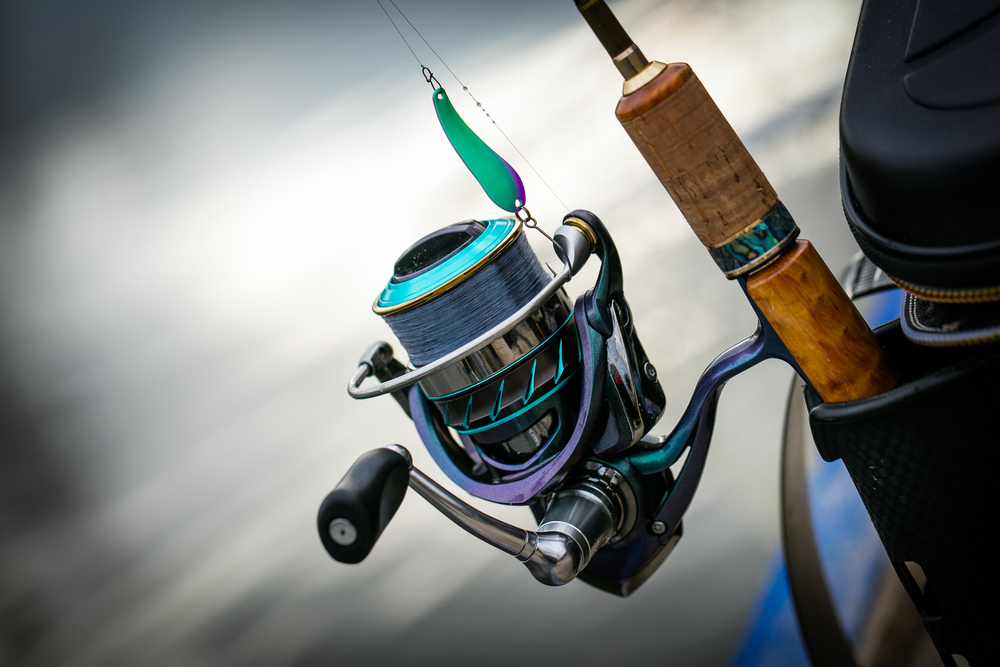
When you go to select your reel you will find that the number of reels to choose from will be equal in number to the rod selections that are out on the market today. You will want to purchase a direct drive, disc drag reel that matches the rod. Trying to hit the suds with a pawl type drag that are found on some trout reels, just won’t cut it if a trophy fish comes your way.
I favor a large arbor reel because when fully loaded with backing it will increase the spool’s diameter allowing for more line pick-up with each turn of the reel. If a nice size fish is running towards you taking up line quickly is going to be important. The majority of the fish you catch along the Jersey Coast will not take you deep into your backing. But a teen size bass or hard tail definitely will.
There are a number of entry-level reels to look at that won’t break the bank if you are watching your pennies. The System II, Redington, Teton, or Tioga are all good choices that have disc drags and will be able to handle just about anything that you will hook into along the beach. But they will be stressed if you are lucky enough to consistently push them with big blues, reel screeching albies, or large bass. If you know that you will be fishing quite regularly I would consider purchasing one of the top of the line reels such as an Islander, Tibor, Charlton, Finor, or Pate, to name a few.
Line
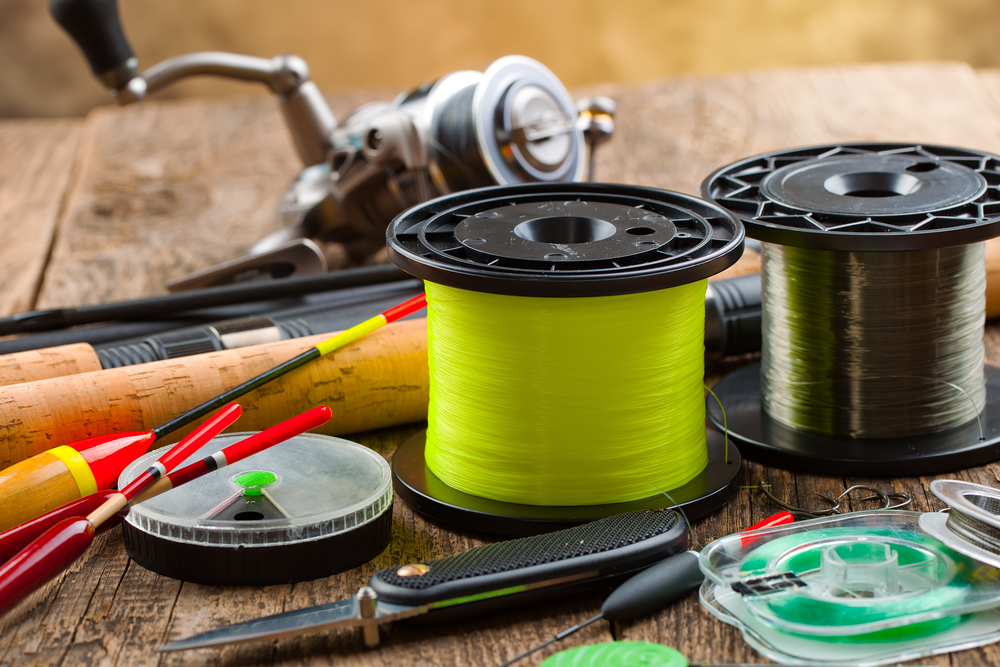
The easiest line for a beginner to cast is a full length weight-forward floating line but is not the line I would recommend if you are purchasing only one line. Your work horse line in New Jersey will be a full length WF intermediate line. This will be particularly true if the majority of you fishing is done from the beach or jetties.
Even though the floater is easier to pick up off of the water thereby making it easier to cast a disadvantage is that oncoming waves and chop will frequently sweep it around. As a result you will not remain in good contact with your fly upon retrieval. A lot of strikes can be missed because of this.
The intermediate line will sink at the rate of 1 1/2 to 2 inches per second and can be counted down to different depths. This will provide you with the option of covering more water in a vertical plane. With a quick retrieve you will still be able to fish surface poppers or sliders or have the option to allow the line to sink below the surface.
I prefer the intermediate clear cold water lines that are available today. Airflo has an excellent cold water striper line that utilizes their new Polyfuse Technology that fuses together the outer and inner layers. They guarantee their lines for five years no questions asked and also give a 28-day satisfaction money back guarantee.
Your second line that will be most advantageous for the waters of New Jersey will be a sinking line. This is especially true if you spend a lot of time fishing the back bays or tidal rivers. In these areas you will find strong currents and rips on the moving tides and will need to get your fly down deep to be in the strike zone. Here is where a sinking line will fit the bill. In these situations your intermediate line will drift over most of the fish and should be reserved for times of slack tide or low water.
Sinking lines, 250-850 grains, will have sink rates that range from 5-12 inches per second. As a result they will be much more difficult for the beginner to lift out of the water. Their overall weight will also make casting much more difficult. Casting them will need to be mastered however if you want to maximize your time and efforts while on the water.
The Teeny saltwater series or the Airflo Depth Finder series are both good choices for sinking lines. To start purchase a 350–400 grain sinking line, this will over most of your needs. This line can be fished on a ten or an eleven-weight rod.
As a beginner I would also not select a shooting head system until you have learned the fundamentals of good casting. These systems will give you more distance but will collapse on the beginner as soon as the head is extended out beyond the rod tip.
Leader
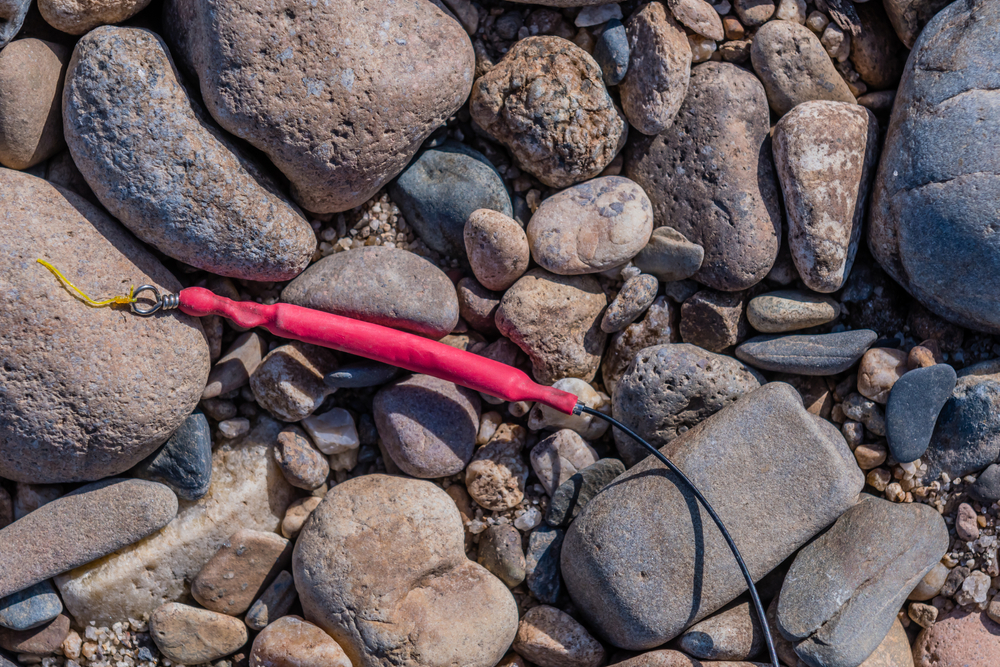
The correct leader system has always been a point of contention with many fly fishers as to what works best and is correct. Let me pass along a bit of advice that I received from one of the industry’s best fly fishers, Bob Popovics. And that is to ‘keep it simple’. Don’t complicate your leader systems with many sections or knots if there is no need to. If a straight four to five foot section of fluorocarbon or mono tied directly to your fly line is scoring fish than there is no need to change anything.
A general rule to follow when hitting the suds is that if the water is clear and calm a longer leader will be needed. If the water is rough and discolored the fly fisherman can get away with a shorter leader. For beginners longer leaders should range in the seven to eight foot ranges. Shorter leaders should be in the four to five foot ranges.
When using a longer leader with floating or intermediate lines taking an eight-foot piece of monofilament and knotting it directly to your fly line is not the correct approach. When done in this manner you will notice that at the end of your cast the leader may fall straight down into the water in a pile. In other words it will not turn over. This is a common casting problem and is in part due to poor technique. To help allow the leader to turn over and continue to transmit energy from the fly line (check out our guide on how to wade safely), your leader will need to be tapered.
Constructing the leader
To construct your leader begin by using a nail knot or albright knot to connect a six-inch piece of forty to sixty pound hard mono to the fly line. In the other end tie a surgeons loop. This short section will help to better turn over the leader. For braided core lines a nail knot will work fine but for the new mono core clear lines I recommend using an albright knot. The nail knot is a friction knot and can possibly be pulled off the mono core by a large fish if the knot cuts through the fly line’s coating. Since the albright knot is tied by doubling over the fly line there is much more for this knot to hold on to.
Once this small section is in place it will permanently remain there unless it becomes damaged. From here use a loop to loop connection to attached the butt section of your leader. This section can be two feet of twenty-five pound test. Blood knot this to a two foot section of twenty pound test followed by another blood knot to end with fifteen pound mono or fluorocarbon. You can reduce the number of leader sections to two as the total length of your leader is shortened to about five feet. Blood knots will ensure the smoothest connection between the leader parts and move through the tip or guides with the least resistance. Because of their low profile they will also minimize the amount of detritus or small algae or seaweed that can snag on your connections.
To attach your flies to the last section or tippet section of your leader I would recommend using a trilene or improved clinch knot to attach all your flies that you are going to draw up tight to the leader. The other option is to use a non-slip mono loop knot to attach all your flies. This knot will allow your flies more freedom of movement. This will enhance side to side undulations for your non-weighted flies or impart more of a jigging type of motion to your weighted flies. All of your clousers, jiggies, and half and halfs should be attached with this knot for this reason.
Flies
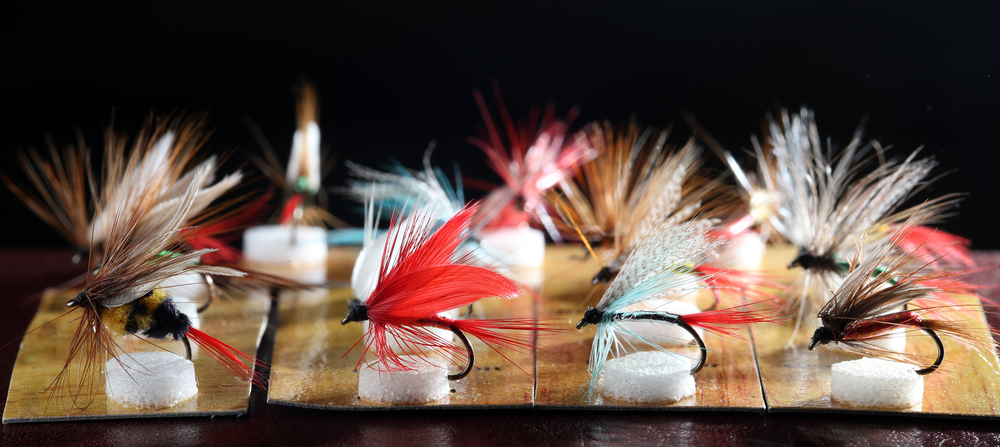
The easiest flies for the beginner to cast will be deceiver-like patterns that are three to four inches long. Large flies, weighted flies, bangers, and poppers that are not as aerodynamic will be more difficult. As a beginner it is not uncommon to get whacked when trying to throw these flies for the first time. This is especially true if you are trying to do it in a crosswind. You will however need to practice casting these flies because they are an essential part of your arsenal of imitations.
In order to be successful there are three factors that are important to consider when working any of your flies. These would be color, profile, and retrieve or what I call CPR for the flyfisher. Check the archives here for an in depth look at these three factors that are discussed in my last article.
Otherwise, begin with basic colors, olive, chartreuse, blue, black, green, or yellow over white, or all white or black. You will hook plenty of fish with these colors. As you build your collection of flies look for the following seven flies to cover most of the baits that you will encounter in NJ. Lefty’s deceivers, Clousers, half-and-halfs, and Bob Popovics’ jiggies, surf candies, bangers, and siliclones.
Stripping Basket
A stripping basket is an essential part of your arsenal that you cannot do without. In most instances the stripping basket can be considered the fly fisherman’s best friend. The basket is designed and intended to hold your fly line upon retrieval. The line is stripped into the basket thus preventing it from falling into the surf wash or jetty rocks. Without it you can expect nothing but tangles and headaches. For the fly fisher that is landlocked you will need two baskets to be most efficient. One will be used in the surf or on the jetties and the other will be utilized while wading the back bays. When in the surf you should be using a basket that has plenty of drainage holes in it. This way any wave splash that comes into the basket will easily flow out. If your basket does not have drainage holes in it you risk the chance of having the basket pulled or ripped from your waist. Or you will also find that you have to constantly dumped the basket to empty the water that has come in.
When you are wading in the back bay or on the flats your basket should have no holes in it. This will allow you to wade out as far as possible as the basket floats on top of the water. No water will enter the basket causing the line to lift up out of the basket and float away.
With either basket it should be fashioned with cone inserts or mono fingers to hold your line in place. These inserts will allow you to move around and not have to worry about your line shifting and then tangling. They will also help to eliminate tangles as your line shoots out of the basket.
Gear Bag
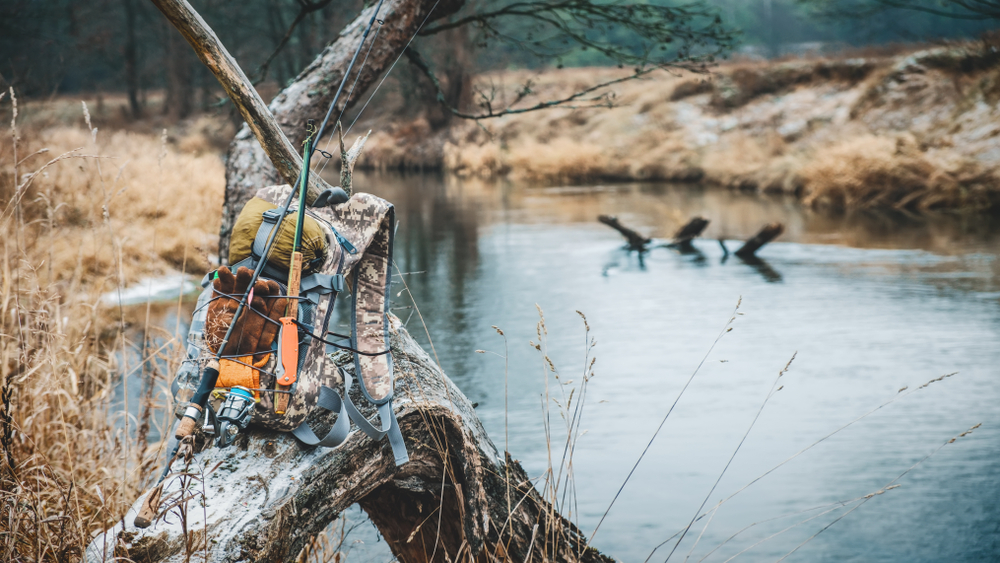
When it comes to selecting a gear bag there are many options to choose from. Shoulder bags, chest packs, backpacks, waist packs, fleece wallets and the like. It basically comes down to personal preference and what you feel most comfortable with.
I prefer to strap on a waist pack or fanny pack to carry my fly boxes and accessories. I do not like shoulder bags or chest packs. I do a lot of jetty hopping, up and down the rocks, and do not like anything swinging down in front of me or to the side when I bend down. A shoulder bag will constantly shift as you move whereas a waist pack will remain securely fastened behind you. I also dislike chest packs because I do not like anything in front of me when I am fighting a fish. All I want is the rod and me, nothing else. My stripping basket also goes behind me when I am fighting a fish, so I am left with full freedom of movement.
If you can fit the flies you need or maybe better said the flies you like to carry (many of us carry many more flies than we will ever need.) in bi-fold fleece wallets then you have the least restrictive set-up of all. These can be conveniently slipped in jacket pockets along with spare leader spools, snips, and a tape measure.
What Makes Saltwater Fishing So Attractive?
If you have ever read a saltwater fishing journal or watched some saltwater fishing shows, you may be able to grasp just how much fun a trip on the ocean could be. While freshwater fishing has a great deal of charm, there is something about setting out on a boat into the deep blue sea that is just so appealing. Throw on top of that the chance to catch a monster fish, or encounter other giants of the sea, and you have yourself an adventure every time you hit the water.
That is not to say you need a huge boat for saltwater fishing. Smaller sea vessels, like rowboats, inflatables, or even kayaks can serve as perfect vehicles when fishing close to shore. The appeal of the sea, whether close to shore or not, has fueled many poetic and artistic works – and once you try it out, it’s easy to see why.
The Two Primary Types of Saltwater Fishing
Saltwater fishing is generally broken up into two main categories; inshore and offshore fishing. Both styles carry with them different rules, so be sure check the local saltwater fishing regulations long before venturing out. It is not always the case that a saltwater fishing license is required – this depends upon national, state and local laws. Just be sure you check up on the regulations before trying out one of these two forms of saltwater fishing.
Inshore Fishing
It is considered inshore fishing when you are anywhere within sight of shore, fishing in water less than 30 meters deep. Generally you’re on a boat that can be carried on a trailer or hooked onto a vehicle, as opposed to bigger ships that stay docked on the water.
This is a more inexpensive style of fishing than offshore, though you’ll unlikely catch as big as fish at this range. The possibility for a monster fish is still there, however, and you’ll certainly grab a bigger prize than if you were fishing from shore.
When inshore fishing, your rod length is considerably smaller than when you’re out on open water. Bait is smaller as well, and chumming the water with dead bait isn’t as necessary at this depth. Unlike offshore fishing, there’s the option to anchor the boat and bounce a lure off bottom to entice fish, in addition to the traditional form of trolling.
If even a small boat isn’t an option for you, there are ways you can wet your line from shore and get results. A popular style is called surf fishing, where you wade into the water a little bit and cast out in hopes for some fish hugging the shallows. Sea bass and perch are examples of fish you could bring up at this depth. Fishing from shore is the most cost-effective way to catch a saltwater fish.
Offshore Fishing
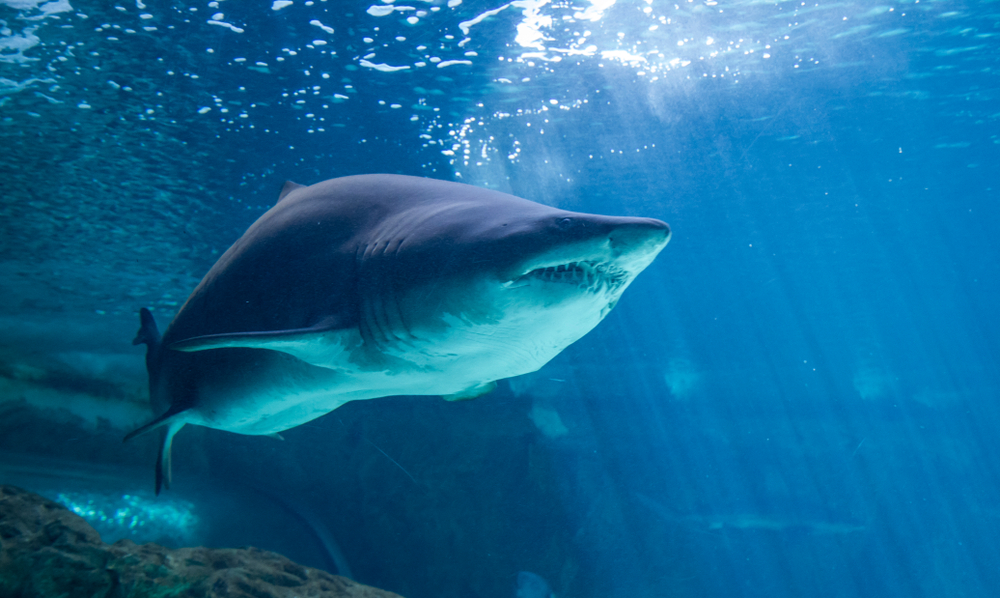
For those who aren’t satisfied being tied to the shoreline, give offshore saltwater fishing a try. How you choose to hit the open water depends on your boat situation. Some people love having their own vessel to take out and fish with, while others prefer to rent a charter and go out with a guide. The results will vary for each approach, but the bottom line is that you should choose the solution that interests you most.
Nothing quite beats the open sea when it comes to a great atmosphere and the size of the fish you could catch. Saltwater fishing pictures can’t capture the immensity of some of the trophy fish you could reel up from the depths, such as sharks, tuna, sailfish, or marlin.
Trolling for fish is generally the preferred method, enticing passing fish with shiny spoons. As fish are much larger when offshore fishing, rods are bigger and line is tougher to keep up with the environment. Bait can include such exotic marine life as squid, and sometimes you’ll have t o use a whole mackerel to get what you’re after.
As the fish you can catch out at sea can be very big, most boats come stocked with a game-chair, which sits at the stern of the boat. Parking yourself in one of these chairs, and then setting the butt of your rod into a mount, will give you a much better foundation to fight your catch. With this assistance, you will need to have a higher level of strength and muscle endurance to successfully reel up a huge fish.
TV Shows Featuring Saltwater Fishing
Since not everyone has the chance to be able to go and learn by doing when it comes to marine fishing, a great alternative can be checking out a saltwater fishing video over the web or better yet, one of the many saltwater fishing TV shows that have come around in recent years. Saltwater fishing shows generally take the viewers right out to sea and show exactly what it is like to fish for certain species in various locations around the world. They can even provide saltwater fishing ‘how to’ tips for your convenience.
Here is a list of the types of popular saltwater fishing shows throughout the years:
- Big Coast
With lots of coverage for saltwater fishing along the shores of much of North America, this show is a real joy for those who love high definition video in wide screen format. The dazzling visual beauty of nature is captured on screen here. Salmon are aplenty.
- Big Water Adventures
With a focus on the sheer adventure of saltwater fishing trips, this is one show that is all about the entertainment. That doesn’t mean you won’t learn a lot, but it definitely focuses on making this kind of fishing a joy to watch.
- Fishing the Flats
For those wanting to learn about shallow water fishing in saltwater, like surf fishing, Henry Waszczuk is a master. The angler brings 20 years of experience straight to the screen.
- Flatsclass
Another inshore fishing series that focus on the joys of surf fishing and fishing from piers. This series is all about teaching the proven results of pro-level anglers.
- George Poveromo’s Saltwater Fishing
Not only does this show cover the North American region, but host George Poveromo travels all around the world to bring a ton of adventure to each episode. With a focus on a species or region for each episode, this is a great series for those who want to learn more about new places and types of fish.
- Reel Adventures
With lots of underwater camera work, tons of tips and an exploration of the places, people, history, cuisine and styles of saltwater fishing popular around the world, this series definitely has its share of huge fans.
Saltwater Fishing Resources for Beginners
The web holds more than just pictures and videos – think of it like a giant resource of saltwater fishing for dummies, which we all are when we first get started. You can check out forums on saltwater fishing and, of course, peruse through many articles dedicated to the sport. When not online, talk to local guides and experts for some tips – just be prepared if they are not willing to give you the details on their favorite saltwater fishing spots and secrets.
So there you have the basic essentials that you need to get starting this season in the salt. So give it some thought and look for good conditions, calm surf, and light winds to start. And don’t forget to put on the korkers for safety. Good fishing!…….fly fishing that is!









